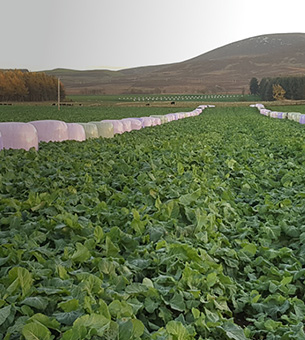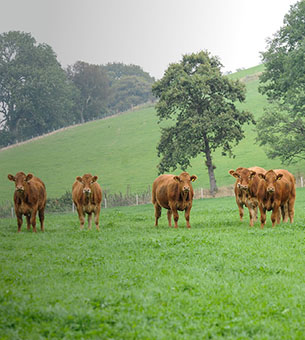Autumn reseeding provides a great opportunity to boost the productivity of under-performing leys at a time when there is less pressure on grass availability.
There are challenges with autumn reseeding, but careful planning to accommodate them gives the best chance of new leys establishing well and building their production potential over the winter. Germinal technical director Dr Mary McEvoy offers her advice on successful autumn reseeds.
Timing is crucial
The potentially warm and moist weather often seen in August and early autumn make ideal conditions for a reseed. But the weather can change quickly as autumn progresses, so it’s important you start reseeding in good time. Aim to have sprayed off by mid-August and have the seed in the ground by the first week of September.
Sowing any later increases the risk of the weather and temperature deteriorating making management more difficult and successful germination less likely.
Check soil fertility is right
Before starting any reseed consider your soil fertility as new swards need the right nutrition to establish well. Refer to your soil test results first, but generally, three bags of 10:10:20 per acre is advised for soil index 3.
Apply fertiliser after the seed is sown, then follow three weeks later with N; be aware of the September deadline for spreading. Don’t forget to also check your soil pH and apply lime if necessary prior to sowing.
Pick your reseeding method carefully
Whichever method you use for reseeding, always aim for a fine, firm, and level seedbed to maximise seed-to-soil contact. If you plan to direct drill, remember there is an increased risk of slugs in autumn reseeds.
The tramways between establishing swards act as a pathway, allowing them to spread quickly and easily. To avoid this, check your establishing reseed closely and use slug pellets as appropriate.
Think about pests
Reseeding in autumn brings an increased risk of pests including frit flies, leather jackets, and slugs. Make sure you monitor your reseed carefully for pests during establishment and seek expert advice if you think there’s a problem.
Keep on top of weeds
Keeping on top of weeds as a reseed establishes is an important part of it being successful. Post-emergence spraying with an effective herbicide provides the best control of weeds and is the most cost-effective option.
To achieve good root kill and a high level of control, make sure weeds are sprayed when they are growing actively. This is normally around six weeks after sowing.
Before spraying always check the product label to make sure you’re using the product within the correct timeframe. Some sprays are not permitted for use after 31 August. Also take note of the grazing interval as putting stock in early is an important step in developing a denser and better tillered sward following an autumn reseed.
If you are including clover in the reseed, be sure to use a clover-safe spray and always follow the manufacturer’s guidelines. Emergency use has been granted for Clovermax until 11 September, but with such limited availability, consider reseeding grass on its own so you can control weeds with a post-emergence spray, before stitching in clover later.
Common pitfalls with autumn reseeding
- Incorrect timing – late sowing impacts establishment and prevents a post-emergence spray or grazing before spring. Plan ahead to give yourself enough time
- Poor seedbed preparation – rushing into sowing after spraying off risks it being less effective. Try to wait three weeks
- Poor soil fertility status – don’t expect the 10:10:20 applied at reseeding to do all the work. Have a long-term plan for improving your soil health
- Inadequate rolling – rolling is vital for maintaining moisture and consolidating the seedbed, as well as promoting good soil-to-seed contact
- Poor weed or pest control – don’t jeopardise your investment in reseeding by skimping on weed or pest control. Post-emergence spraying is your best chance to control weeds
- Delayed first grazing – not grazing until spring impacts sward development and subsequent productivity. Aim for at least one grazing before winter.



